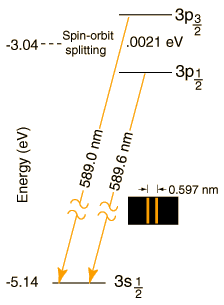Sunday 14 October 2012
Saturday 13 October 2012
1 trillion frames per second camera
I came across this cool video on youtube. This camera is so fast, it can take a video of a travelling light beam. You can also use it as a type of optical radar to look around corners:
Wednesday 10 October 2012
2012 Nobel Prize in Physics announced:
The Nobel Prize in Physics 2012 was awarded jointly to Serge Haroche and David J. Wineland "for ground-breaking experimental methods that enable measuring and manipulation of individual quantum systems".
"The Nobel Laureates have opened the door to a new era of experimentation with quantum physics by demonstrating the direct observation of individual quantum particles without destroying them," commented the academy in a statement.
Haroche and Wineland have independently invented and developed methods for measuring and manipulating individual particles through 1970s to 1990s while preserving their quantum-mechanical nature in ways that were previously thought unattainable.
The two scientists and their research groups have managed to measure and control very fragile quantum states which were previously thought inaccessible for direct observation, according to the academy.
"Their ground-breaking methods have enabled this field of research to take the very first steps towards building a new type of super fast computer based on quantum physics" (see Quantum computer) and "change our everyday lives in this century in the same radical way as the classical computer did in the last century," the statement added.
This years's cash award is 8 million Swedish kronor (about 1 million U.S. dollars).
for more info visit: http://www.nobelprize.org/nobel_prizes/physics/laureates/2012/#
"The Nobel Laureates have opened the door to a new era of experimentation with quantum physics by demonstrating the direct observation of individual quantum particles without destroying them," commented the academy in a statement.
Haroche and Wineland have independently invented and developed methods for measuring and manipulating individual particles through 1970s to 1990s while preserving their quantum-mechanical nature in ways that were previously thought unattainable.
The two scientists and their research groups have managed to measure and control very fragile quantum states which were previously thought inaccessible for direct observation, according to the academy.
"Their ground-breaking methods have enabled this field of research to take the very first steps towards building a new type of super fast computer based on quantum physics" (see Quantum computer) and "change our everyday lives in this century in the same radical way as the classical computer did in the last century," the statement added.
This years's cash award is 8 million Swedish kronor (about 1 million U.S. dollars).
for more info visit: http://www.nobelprize.org/nobel_prizes/physics/laureates/2012/#
Sodium doublet at 589 nm
The 589.0 nm spectral line of the sodium yellow doublet is a transition from the 2P3/2
excited states to the 2S1/2 ground state of the sodium atom.
Energy level diagram showing how the two energy levels are split in the
presence of a weak magnetic field:
The 3P3/2 level is split because of L-S coupling.
The selection rules for this transition are:
Δ l = ±1
Δ j = ±1, 0
For the transition from 3P3/2 ===> 3S1/2, Δ l = +1 (since S = 0 and P = 1)
and Δ j = 0 for the 3P1/2 ===> 3S1/2 and +1 for the 3P3/2 ==> 3S1/2 transition. (j = s+l and is given by the subscript).
Therefore the transitions satisfy the selection rules.
excited states to the 2S1/2 ground state of the sodium atom.
Energy level diagram showing how the two energy levels are split in the
presence of a weak magnetic field:
The 3P3/2 level is split because of L-S coupling.
The selection rules for this transition are:
Δ l = ±1
Δ j = ±1, 0
For the transition from 3P3/2 ===> 3S1/2, Δ l = +1 (since S = 0 and P = 1)
and Δ j = 0 for the 3P1/2 ===> 3S1/2 and +1 for the 3P3/2 ==> 3S1/2 transition. (j = s+l and is given by the subscript).
Therefore the transitions satisfy the selection rules.
Free electron energy levels
An unpaired electron in a molecular radical can be considered to be an effectively free electron. A free electron in a magnetic field has two energy levels due to the two possible orientations of
its spin, and hence of its magnetic moment, with respect to the magnetic field.
The energies of the levels are given by:
E = -μs.B = +- μB.B , where
If an oscillator of frequency 50 MHz is used for an ESR experiment, we can easily calculate the magnetic field required to achieve a transition:
hf = 2μB.B, rearranging this gives us: B = hf*meC/(e*hbar) = 2*f*pi*meC/e
using f = 50 MHz, we get get B = 1.78 mT
Please leave a comment on how you found this page! thanks
its spin, and hence of its magnetic moment, with respect to the magnetic field.
The energies of the levels are given by:
E = -μs.B = +- μB.B , where
If an oscillator of frequency 50 MHz is used for an ESR experiment, we can easily calculate the magnetic field required to achieve a transition:
hf = 2μB.B, rearranging this gives us: B = hf*meC/(e*hbar) = 2*f*pi*meC/e
using f = 50 MHz, we get get B = 1.78 mT
Please leave a comment on how you found this page! thanks
Subscribe to:
Posts (Atom)

